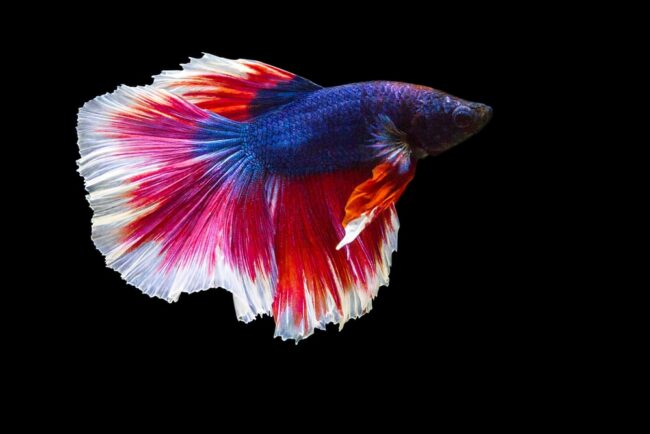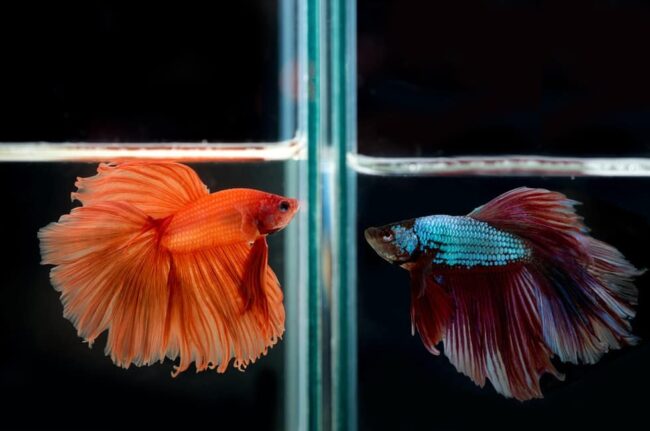Before you buy betta fish, you will probably want to know a little more about it so that you can make the right decision. Some of the basic features are pretty obvious, so you can infer something about betta fish by just looking at it. However, finding out if a betta fish is male or female can be a little more challenging if you are unfamiliar with this field. Therefore, in the following text, we talk about some basic differences between the different sexes of betta fish, so that you can easily conclude whether it is a boy or a girl.
What are betta fish?

Before we continue with a more detailed explanation of the characteristics of male and female betta fish, it is a good idea to briefly explain what betta fish really are. This is not one specific fish, but a large group that includes more than 70 different species that have different characteristics.
What is common to all species of the genus Betta is that these fish are very colorful and unusual, which is why people often choose them as pets, because they are such a cheerful addition to any home.
For example, you can find pure red betta fish and others that are characterized by only one color, but there are also beautiful, interesting color combinations that will surely delight you. How do you determine if a betta fish is male or female?
The body shape of beta fish can provide more information
A feature that can provide more information about the sex of beta fish is certainly their body shape. We can say that in general females are much more oval and round than males, especially in the area of the head. They also usually have a much shorter body. Males are slimmer and more elongated, and their head has a more triangular shape, so it can be very useful if you want to tell with more certainty if a particular betta fish is a boy or a girl.
Color can be helpful

Color can be one of the additional features when determining the sex of beta fish, but it is certainly not enough. The colors of male and female fish are usually quite similar, although male betta fish often have brighter, more vibrant colors, while the colors of females are darker. Depending on the species, females sometimes have equally prominent colors, so this can be an aggravating circumstance. For example, you can find red betta fish of both sexes.
Red betta fish is particularly popular due to its beautiful, vibrant color and we suggest you read more about their amazing properties if you’re interested in getting one for yourself. Also, the body color of betta fish largely depends on the condition in which they are, so females that are under stress can enhance the color.
Keep this in mind when determining the sex of betta fish. Another characteristic that distinguishes fish of different sexes is that males usually do not have prominent stripes, while females can have rather visible horizontal stripes around the flank. These stripes become especially pronounced in female betta fish during the mating season.
Size is different
When they are born, male and female betta fish babies are usually the same size, but this changes significantly during growing up, so their final size is different. Female betta fish can usually grow up to a maximum of two inches, while males can be a whole inch longer. When you see male and female fish next to each other in a tank, you will probably be able to easily determine which sex they are just by their size.
Fin length is another useful feature

Although this may vary in different species of betta fish, the general characteristic is that the fins are usually much longer in males than in females. This is especially noticeable on the pelvic fin, which is much longer and thicker in male beta.
The beard has different size and visibility
Another characteristic that differs significantly in male and female betta fish is the size and visibility of the beard when the fish flares its grill plates. This beard is actually a membrane that is much more pronounced and larger in males, and is often seen when the male is not flaring. In females, this is usually not the case, because this membrane is much smaller, so it is expressed only during flaring.
Pay attention whether there is a bubble nest

Bubble nest is a nest that most male bettas create from saliva bubbles and is a place where eggs will be incorporated and thus protected from adverse influences. If you can notice a bubble nest on the surface of the water in the aquarium, it is most likely that a male betta fish is inside.
This is not a 100% accurate method of determining the sex of betta fish, because sometimes females can blow bubble nest too, but this is a far rarer case. If you are already pretty sure that the betta fish is male, this can certainly be one of the features that will give you the final confirmation.
Behavior: Male betta fish are usually much more aggressive
One of the things by which male betta fish are recognizable is certainly their intolerance towards other males, so they often attack other fish, and even their reflection if they see it in the mirror and think that they are not alone in the aquarium. Female betta fish can also go wild if they are stressed, but they are usually far less aggressive than males.
Conclusion
Male and female betta fish, both captivating in their own right, have some different traits that can be helpful when trying to determine their sex. These beautiful betta fish usually vary in size, color, body shape, beard size and visibility, fin size, as well as overall behavior. Male betta fish, known for their vibrant hues and striking appearance, more often blow bubble nests and are more aggressive in general. Once you learn to discern these traits and become more familiar with this field, you will be able to very easily conclude whether the beautiful betta fish is male or female just by looking at it for a few seconds.
